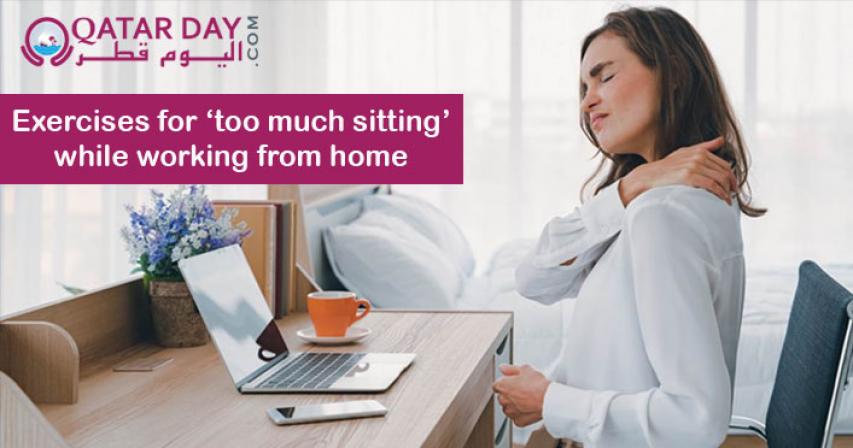5 exercises to offset 'too much sitting' while working from home
- 4 years ago

It's another day of self-isolating, which means it's potentially another day of sitting indoors restlessly taking yet another Zoom meeting.
Prolonged sitting is an unavoidable reality for many. And with lots of us spending more time inside, as the pandemic continues, it's inevitable that we're spending even more time being sedentary.
The irony is that we're staying home to protect our health, but all that added sitting is putting our health at risk in other ways.
In addition to being a risk factor for many life-threatening cardiovascular and metabolic diseases, excessive sitting can lead to depression, chronic pain and increased risk of physical injury, according to research. That's why it's important for us to become aware of our sitting habits and do what we can to counteract them.

The poor posture problem
Poor posture is the most recognized, tangible problem associated with too much sitting. Many of us know, all too well, how our sitting posture contributes to neck and back pain while limiting our ability to move our shoulders and spine.
Simple, passive stretches, like standing and raising your arms overhead, can provide immediate relief of tension and help break up long bouts of sitting, but they don't create long-term posture changes. Only exercises that address the muscular dysfunction from poor sitting posture will strengthen weakened muscles and inhibit overactive ones to truly counteract the impact of too much sitting.
The two most common posture issues associated with sitting are Upper-Crossed Syndrome and Lower-Crossed Syndrome. Upper-Crossed Syndrome is characterized by slumping shoulders due to a dysfunctional combination of over- and underactive muscles in your chest, neck and shoulders.
Lower-Crossed Syndrome, which usually goes hand in hand with its upper-body counterpart, creates issues of tension and weakness in your core, back and hips.
To provide both instant relief and restore muscle function, the five exercises below include a combination of instant-gratification, feel-good stretches with posture-correcting exercises.
No more aches and pains
Practice the first three stretching and mobilizing exercises throughout your day to break up long bouts of sitting. Ideally, try to get up from sitting at least once per hour to stretch. Do the last two strengthening and mobilizing exercises daily to make lasting, positive changes to your overall posture. Many of my professional athlete clients do them as part of their daily warm-ups.
You'll notice that specific breathing instructions are included with all the exercises. That's because your diaphragm, your primary muscle of respiration, attaches to both your rib cage and your spine. Consequently, how you breathe has a significant impact on the overall position of your ribcage and spine, which, in turn, creates your body posture.
Important note: Consult your physician before starting any new exercise program. Use caution and stop if you feel any pain, weakness or lightheadedness.
...[ Continue to next page ]
Source: CNN
Comments